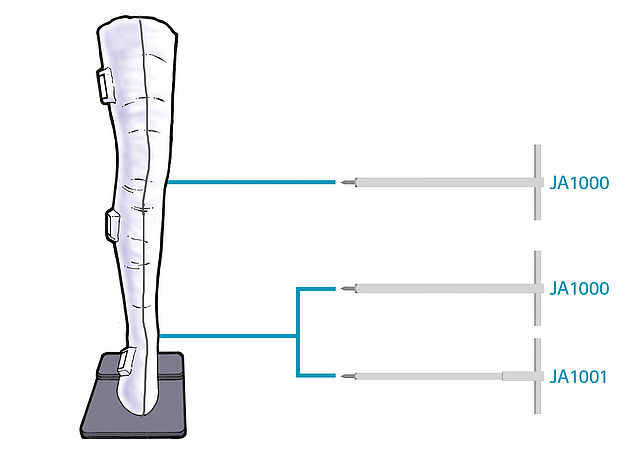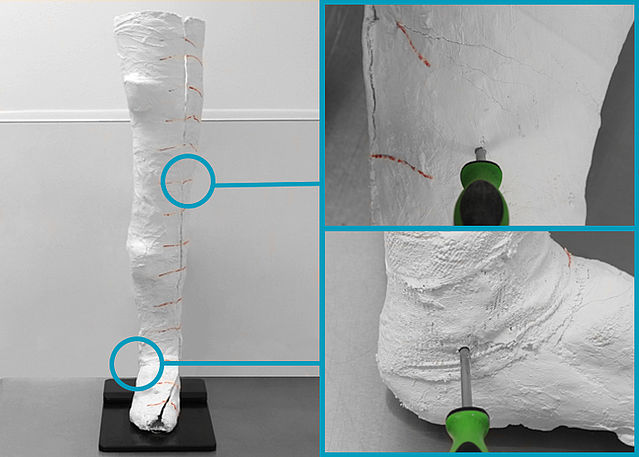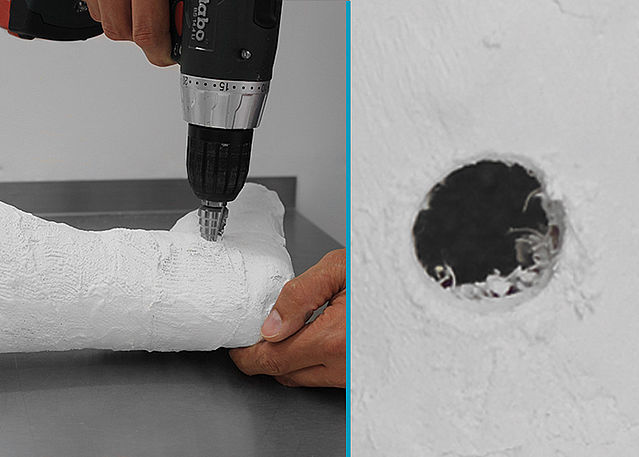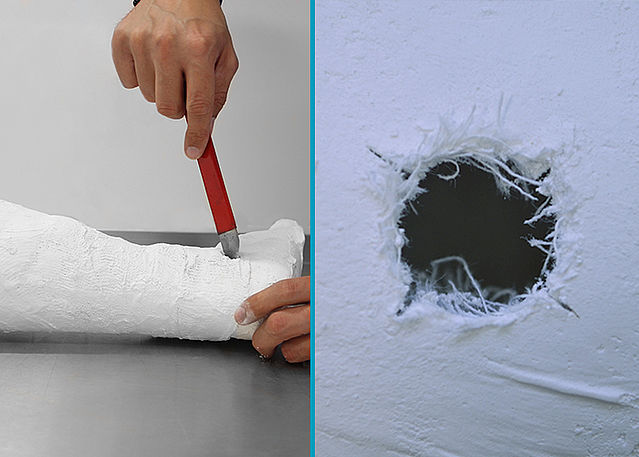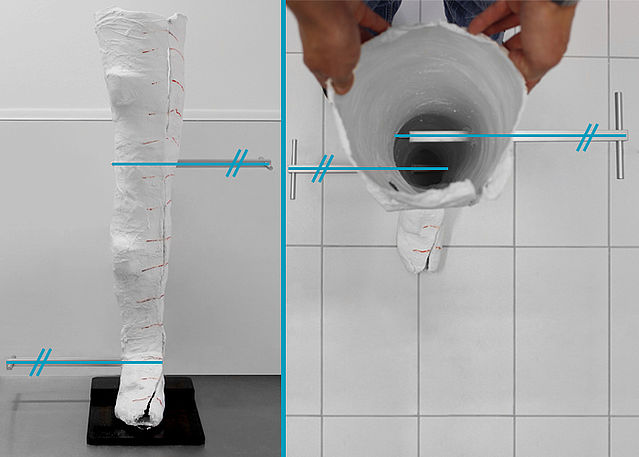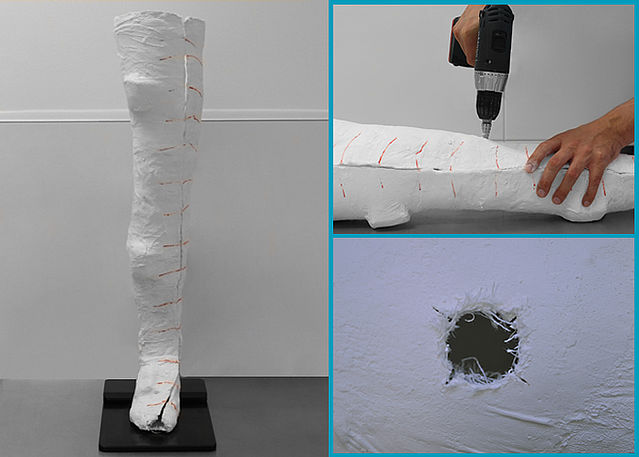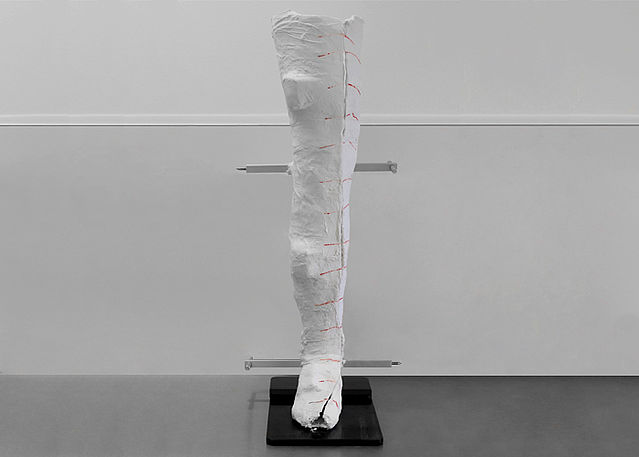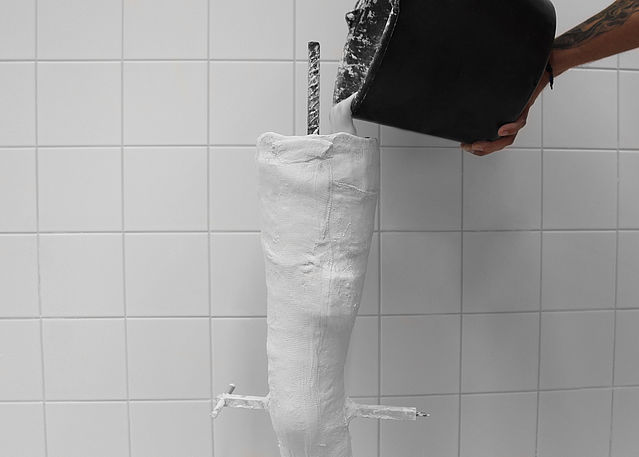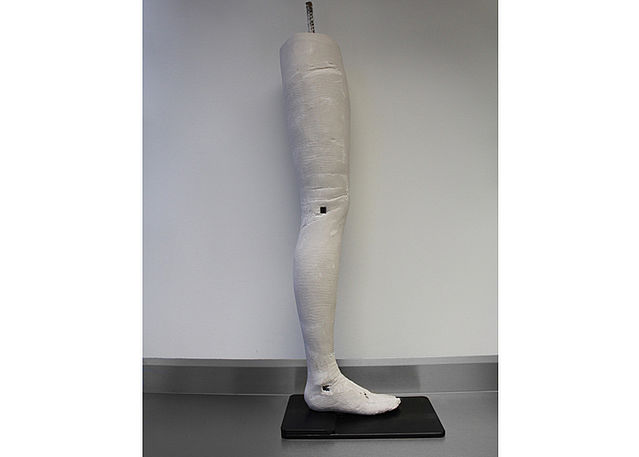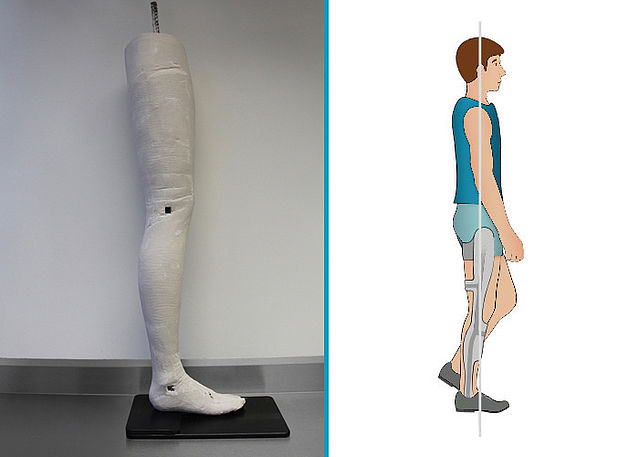Making the Positive Cast
After making the negative cast, it is filled with plaster. However, the procedure is a little more complex from an orthopaedic point of view:
The calculated mechanical pivot point at knee height and the mechanical pivot point at ankle height are already marked while making the negative cast. The pivot points are transferred in two steps: from the leg to the negative cast model and from the negative cast model to the positive cast model.
These markings help placing the alignment aids while making the positive cast. The alignment aids should be placed parallel to the ground and to each other and at an angle of 90 degrees to the direction of movement. They serve as placeholder for the holders of the system joints. The axis position of ankle and knee is the result of the medial and lateral pivot point. These will be the positions of the orthosis joints in the later course of the orthosis production.
Each step of the preparation already has an effect on the final orthosis. The more precisely the pivot points are transferred and the alignment aids are placed, the better the final result.
Last Update: 12 October 2018
